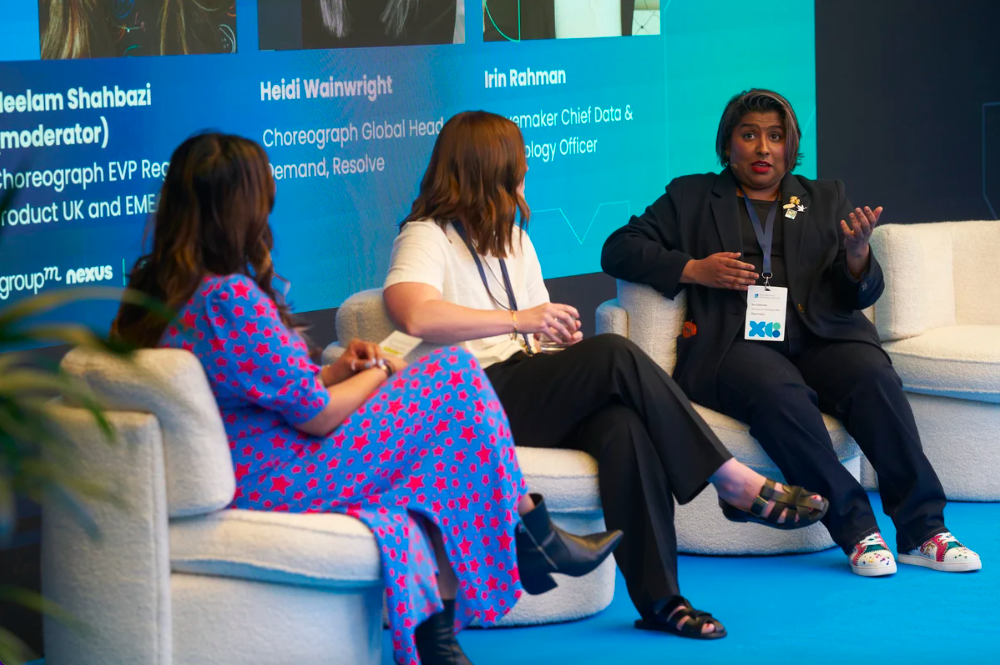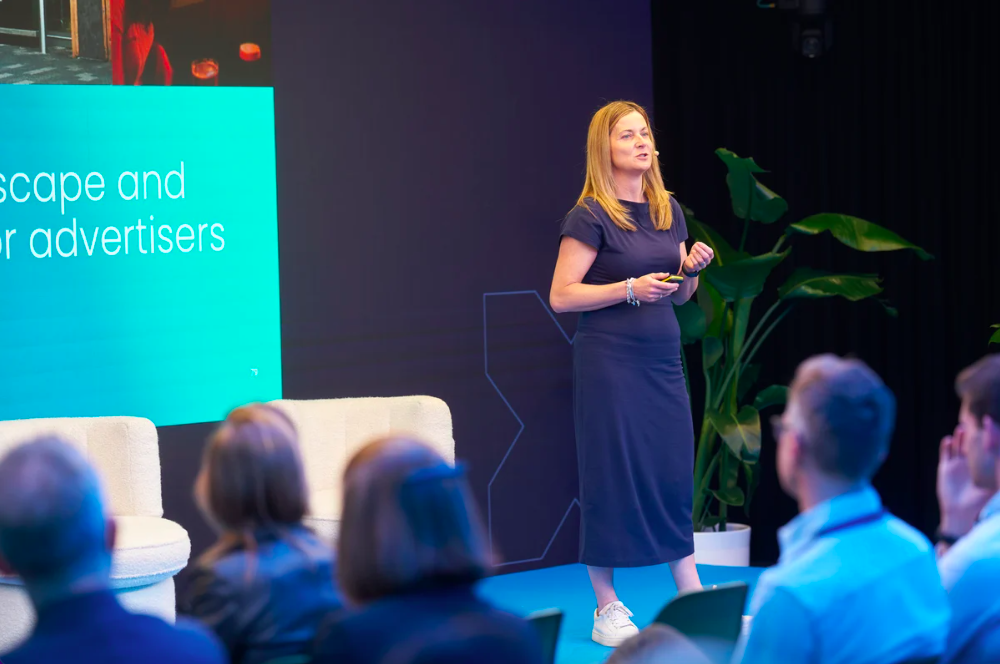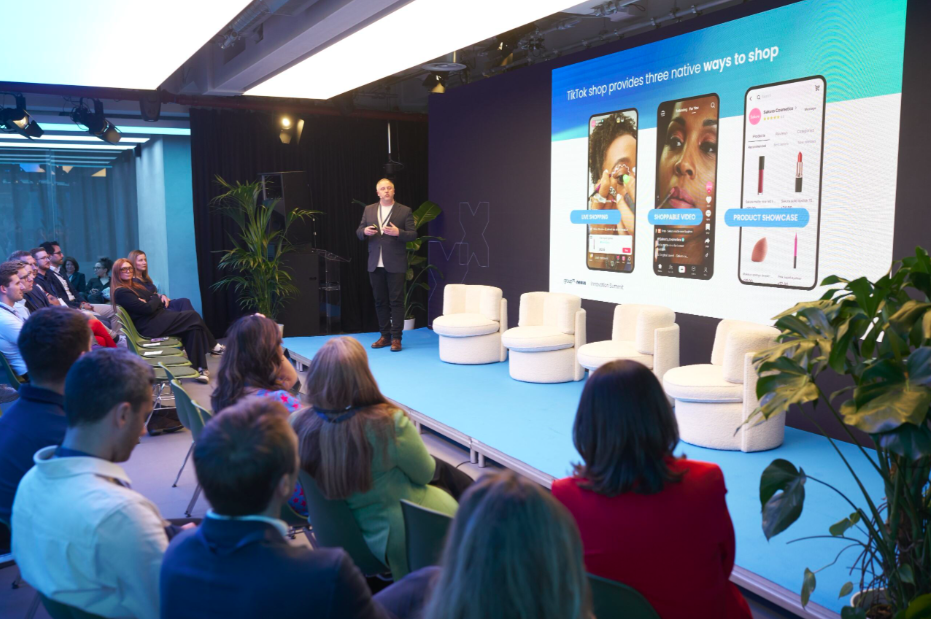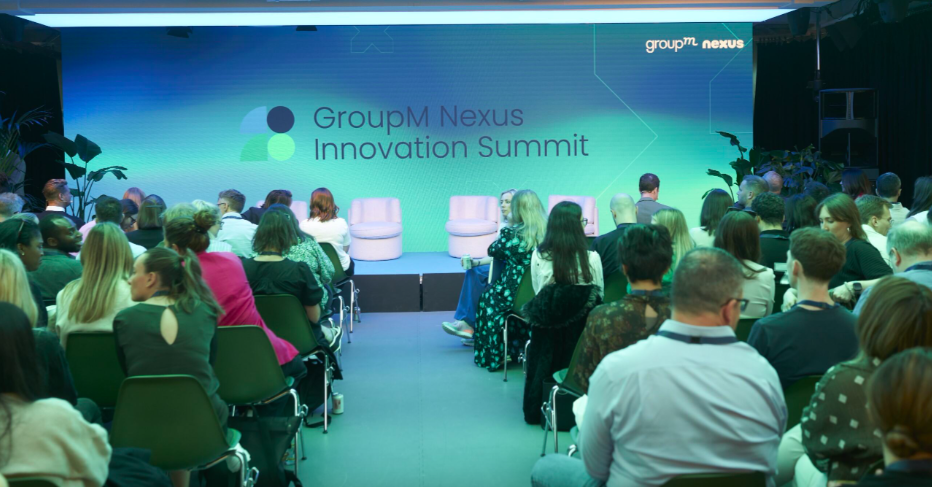Innovation Summit 2024: Top 4 Takeaways
- Publications
- July 11, 2024
On 13th June 2024, GroupM hosted its annual UK event, the Innovation Summit. Bringing together clients and experts across GroupM and WPP, it was an insightful afternoon where optimism met innovation amidst advertising’s rapid evolution, set in the context of Making Every Ad Work Harder. Attendees explored a range of topics to maximise performance in the media landscape.
Here are our top 4 takeaways from the event.
1. Advertising’s future hinges on addressability, with data-driven insights, strategic technology and crafted messaging converging to enhance customer engagement and drive business results.
Put simply, addressable advertising is changing the game. The UK ad economy is expected to grow by 4.9% to reach $47.8 billion by the end of this year1. Alongside that, we’re seeing a continued swing of investment towards digital areas that have full addressable capabilities. By the end of next year in fact, 80% of digital channels are expected to be addressable.
Addressability allows marketers to deliver a specific, relevant message to a targeted audience using advanced data signals. It goes further than programmatic traditionally has, to ensure that the message being delivered is increasingly tailored and relevant.
The addressable ecosystem depends on three major components.
- The first is having the right technology platforms in place. These allow us to look at audiences and data sets and act on them at scale.
- The second is about taking available signals – such as first-party, geographical and contextual – and making them actionable.
- And the third is messaging. How do we dial up our ability to be relevant, in the moment and human?
(1This Year Next Year 2024 Report)

2. We create collaborative advantage, connecting data and making it work harder for clients by securely integrating diverse data sets through federated learning, boosting client effectiveness by up to 30%.
With a mind-boggling volume collected each day, making the most out of data comes down to bringing it together in thoughtful, meaningful ways.
Businesses are increasingly recognising that the sheer volume of data is not as important as the intelligence derived from it. Choreograph emphasises the importance of collaborative advantage through secure data integration and sharing intelligence, without compromising privacy. By utilising secure clean rooms and federated learning, they connect disparate datasets to enhance insights and enable incremental improvements in media and marketing effectiveness. Research shows that the average improvement in a client’s effectiveness though the aggregation of data is between 25 and 30%, equivalent to a quarter of budget.
The shift from big data to intelligent data utilisation involves AI and technology that facilitate real-time campaign adjustments across various channels, leading to more effective advertising experiences. This is particularly relevant as the industry moves away from cookie-based data towards alternative data sets like geo data and data partnerships. These approaches not only improve advertising efficiency but also operational efficiency within teams, allowing for a focus on analysis over routine tasks.
The evolution of privacy regulations and the decline of cookies highlight the importance of federated learning, which offers a decentralised approach to data handling, maintaining privacy while enabling scale. This approach allows for more relevant and efficient advertising, countering the challenges posed by the loss of cookies. Overall, intelligent data application is key to driving innovation and creating genuine value in the advertising landscape.

3. Data and tech have revolutionized OOH, extending its reach beyond just awareness to engaging consumers at every stage of the marketing funnel, as well as opening up vast possibilities for creativity and interaction.
Digital out-of-home (DOOH) advertising has revolutionised the media channel, enabling it to function across the entire marketing funnel due to advancements in inventory, data, and technology. Digital formats now generate 65% of out-of-home revenue, with programmatic OOH being the fastest-growing segment, expected to double from 3% to 6% by 2024. This growth is attributed to its ability to combine broad reach with real-time relevance, offering personalisation at scale. Dynamic DOOH, which can adapt to factors like weather and location, grew by 53% in 2023 but was only used in 10% of campaigns, despite proving more effective within the same media budget.
Technological innovations have expanded creative possibilities, such as 3D content and interactive campaigns, which are delivered programmatically, have delivered outstanding results for clients. DOOH not only enhances consumer enjoyment but also serves practical purposes, extending campaign life and reach through mobile integration and social media, influencing brand metrics and immediate sales.

4. Retail media offers brands key opportunities, including onsite marketing, cookieless data targeting, influencer-driven social commerce, and Amazon’s full-funnel marketplace approach.
Commerce marketing is rapidly growing, with its global value increasing from $18 billion in 2016 to $129 billion recently. Retailers are driving this growth as they seek higher margins from media sales, which can yield 75-90% profit compared to the 3% from product sales. Additionally, the valuable performance signals from retailers’ addressable ecosystems are spurring this expansion.
There are four key areas in commerce marketing:
- Onsite performance marketing allows advertisers to bid for media space on retailer websites, enhancing product visibility on various pages.
- Off-site data utilises retailer’s first-party, consented data from loyalty schemes, offering robust audience segmentation and precise sales attribution. However, market fragmentation and lack of standardisation pose challenges.
- Social commerce leverages influencers on platforms like TikTok and YouTube to connect brands with consumers, offering trustworthy advice and measurable sales impact.
- Marketplaces, exemplified by Amazon, integrate all these elements into a cohesive ecosystem that supports brand awareness, consideration, and conversion through various advertising tools and platforms.
In summary, commerce marketing is a multifaceted opportunity offering personalisation, convenience and seamless customer journeys across touchpoints.

Press Enquiries
